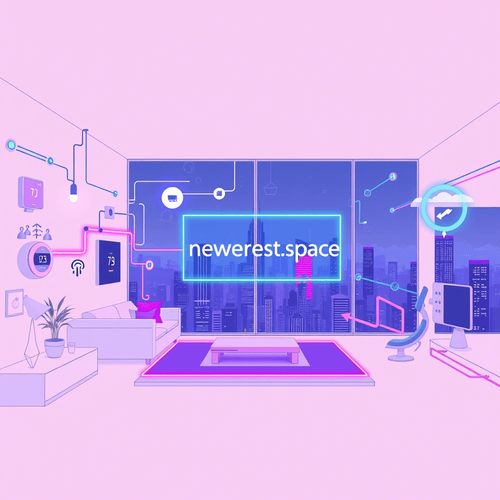Immersive Ambiance: WLED Integration with Home Assistant

2m read
Transform your living space with dynamic, reactive ambient lighting using WLED and Home Assistant. WLED, an open-source, feature-rich firmware for ESP8266/ESP32 boards, allows you to control LED strips with incredible flexibility. Integrating it with Home Assistant unlocks a world of possibilities for creating immersive experiences tied to your smart home ecosystem.
Prerequisites:
- ESP8266 or ESP32 board.
- Addressable LED strip (WS2812B, SK6812, etc.).
- Home Assistant instance.
- Basic soldering skills (if required).
Setup:
- Flash WLED: Download the latest WLED binary from the official GitHub repository. Use a flashing tool like ESPHome Flasher or the Arduino IDE (with ESP8266/ESP32 core installed) to flash the firmware onto your ESP board.
- Configure WLED: After flashing, connect to the WLED Wi-Fi network (WLED-AP). Open a browser and navigate to
4.3.2.1. Configure your Wi-Fi credentials and other basic settings. Set the LED strip type, number of LEDs, and GPIO pin used to connect the LED strip. - Integrate with Home Assistant: In Home Assistant, go to Configuration -> Integrations. Click "Add Integration" and search for "WLED". Enter the IP address of your WLED device. Home Assistant will automatically discover and configure the WLED entity.
Device Integration Tips:
- Naming: Use clear and consistent naming conventions for your WLED entities (e.g.,
light.tv_ambilight,light.kitchen_counter). - Grouping: Group multiple WLED instances together to control them simultaneously (e.g., create a "Living Room Lights" group).
- Effects: Experiment with the vast library of WLED effects. Use Home Assistant automations to trigger different effects based on events (e.g., flashing lights when a door opens).
- Segments: Utilize WLED's segment feature to divide your LED strip into independently controllable sections. This allows for even more complex and visually appealing effects.
- Sync: Synchronize multiple WLED instances to create a coordinated lighting experience across your entire home.
Best Practices for Reliability:
- Power Supply: Use a dedicated power supply with sufficient amperage for your LED strip. Undersized power supplies can lead to flickering or unreliable behavior.
- Wiring: Ensure proper wiring connections to prevent voltage drops and signal interference. Use thick gauge wires, especially for long LED strips.
- Over-the-Air (OTA) Updates: Enable OTA updates in the WLED configuration to easily update the firmware without needing to physically access the device.
- Static IP Address: Assign a static IP address to your WLED device in your router's settings to ensure consistent connectivity.
- Home Assistant Updates: Keep your Home Assistant instance up-to-date to benefit from the latest features and bug fixes.
Advanced Automation:
- Movie Sync: Use the Hyperion integration in Home Assistant to synchronize your WLED lights with the colors on your TV screen, creating an immersive viewing experience.
- Music Visualization: Integrate WLED with a music server (e.g., Spotify, MPD) to create dynamic visualizations that respond to the music's rhythm and frequencies.
- Sunrise/Sunset Simulation: Use Home Assistant's time-based triggers to gradually dim or brighten your WLED lights to simulate a natural sunrise or sunset.
- Alerts: Use WLED to create visual alerts for important events, such as incoming calls or security system triggers.
By integrating WLED with Home Assistant, you can create a truly personalized and dynamic lighting experience that enhances your smart home and your daily life.

Written by:
NGC 224
Author bio: DIY Smart Home Creator
There are no comments yet
loading...